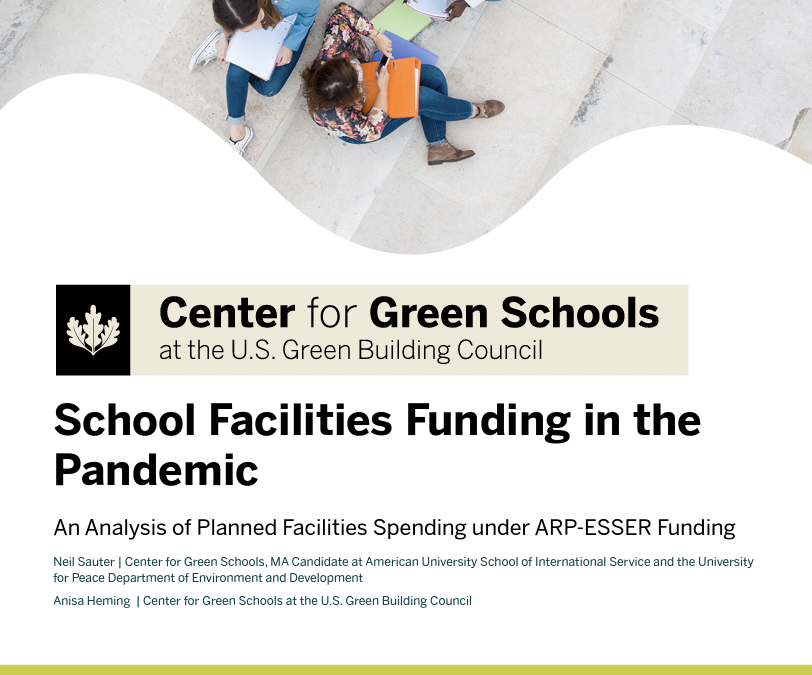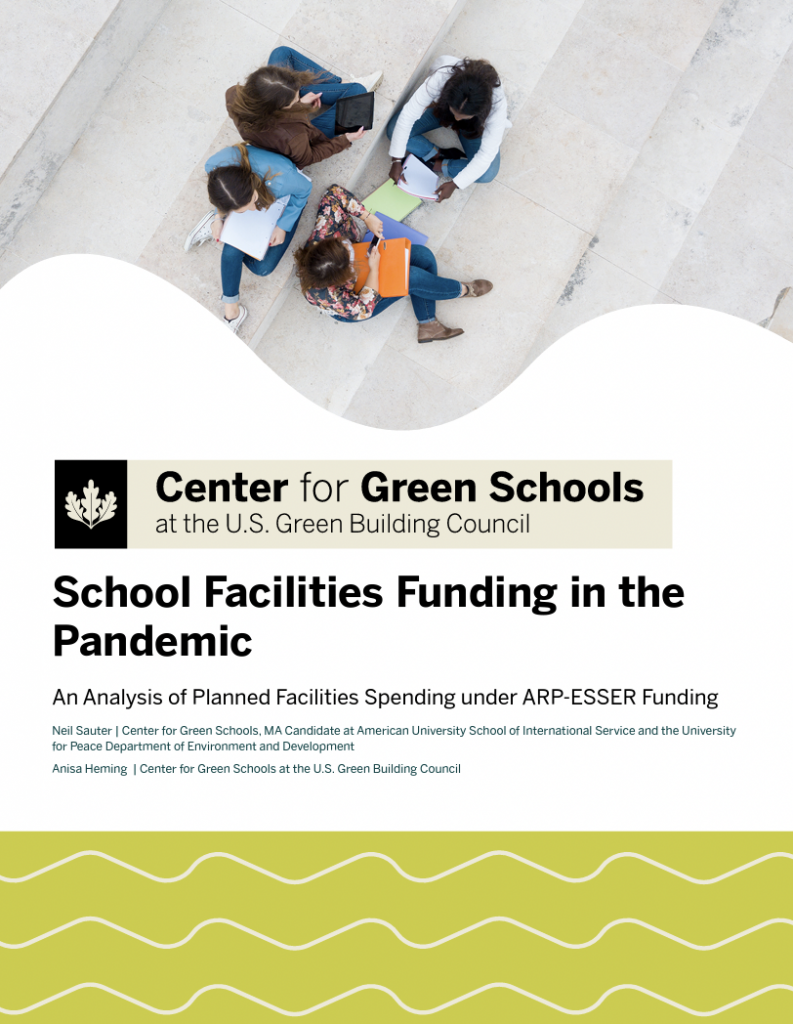Many school districts plan to use federal Covid relief funds to improve IAQ and update buildings, finds USGBC

On November 14, the Center for Green Schools at the U.S. Green Building Council (USGBC) published new findings about how school districts are responding to the Covid-19 pandemic, specifically as it relates to investing federal relief funds to manage air quality and upgrade facilities.
The American Rescue Plan Elementary and Secondary School Emergency Relief funds (ARP-ESSER or ESSER III) represented an unprecedented federal investment in K–12 schools and a lifeline over the course of the Covid-19 pandemic, especially in the case of school facilities. The funding offered school systems a chance to address a critical backlog of deferred maintenance, needed equipment and infrastructure repairs, as well as upgrades to outdated building systems to improve health, air quality and comfort.
The report looks at how school districts across the country plan to invest that federal aid, with a focus on planned funding for large-scale facilities related work. The analysis includes qualitative interviews with three school district facilities personnel and a quantitative analysis based on a data set of 5,004 school districts’ ESSER-III spending plans by the Burbio data service. The data set contained information from school districts from all 50 states and the District of Columbia, representing approximately 74% of public school students and roughly $83.1 billion in ESSER III funds. Access to the data set was generously supported by Carrier.
Major findings include:
- Although staff capacity, inflation and supply chain shortages are affecting infrastructure projects, school districts have prioritized significant ESSER III funding to support indoor air quality for their students and staff. Of all the funding categories tracked in the data set, air filtration/HVAC was the second highest category for district planned spending, at $5.5 billion, just behind staffing/teachers/academic interventionists/guidance counselors.
- Of the 2,379 school districts that planned to spend any of the ESSER III funding on facilities, large districts planned to spend the lowest percentage (on average, 22%) and small districts planned to spend the highest percentage of their total allocation (on average, 30%).
- Small and medium-size districts (those with 20 or fewer schools) consistently reported more spending per school on facilities categories than their larger counterparts.
- In addition to filtration and HVAC improvements, in most cases, districts that planned to spend in this category also indicated plans to spend in at least one other facilities category, displaying a layered approach to addressing Covid-19 at the building infrastructure level.
- The district interviewees highlighted the importance of having substantial federal dollars to invest in costly HVAC infrastructure projects, which would otherwise be delayed or addressed in phases.
- District interviewees noted that where HVAC upgrades were made in their schools, they were able to keep energy usage and costs to a minimum compared to schools with outdated systems. Similarly, interviewees reported positive results from spending in other facilities categories to reduce the spread of Covid-19.
Our analysis shows that nearly 50% of the school districts in the data set are committing at least some of their federal ESSER III aid to facilities projects to
- Upgrade or improve air filtration/HVAC;
- Repair systems to reduce the risk of illness;
- Replace windows, doors and roofs; and/or
- Install UV lights for disease mitigation.
The district interviewees noted how important the ESSER III funds have been for this type of work, but even with $8.5 billion planned to be spent by districts on facilities, it is not nearly enough to address the $85 billion in underinvestment in K–12 school buildings and grounds each year as reported by IWBI’s 2021 State of Our Schools Report.
Since much of the ESSER III spending on major facilities projects has yet to be carried out (districts have until September 2024 or April 2026, if granted an extension), this report focused on planned spending. Over the next several years, the Center for Green Schools looks forward to continuing this research to track completed facilities projects and actual reported spending.
School Facilities Funding in the Pandemic is available to download from USGBC.

